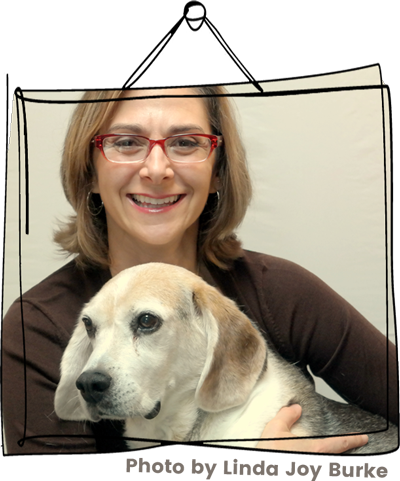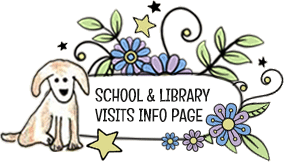
Poetry Friday is being hosted by Amy Ludwig VanDerwater this week! Stop by the Poem Farm for some farm-fresh poems.
April is the cruellest month, breeding
Lilacs out of the dead land, mixing
Memory and desire, stirring
Dull roots with spring rain.
From “The Waste Land” by T. S. Eliot
(Read the poem at the Poetry Foundation)
Ever wondered why we celebrate National Poetry Month in April? It is the cruellest month, according to T. S. Eliot. Despite the dead land and dull roots, there is hope in the lilacs and the spring rain.
I’ve been away from blogging while Saadia Faruqi and I revise our upcoming middle grade novel, A Place at the Table. But I can’t let National Poetry Month pass without joining in on the fun.
More importantly, it is my mission to encourage educators to share poetry with students. That’s why I took a break from the revision tunnel to talk poetry with:
Jed Doherty at Reading with Your Kids
Are you a fan of podcasts? At his podcast, “Reading with Your Kids,” children’s author Jedlie and I talked about the power of sharing poetry with children. You can listen to the episode here.
Resources I mentioned during the podcast include:
Billy Collins’ poem “Introduction to Poetry” at the Poetry Foundation
Poetry 180 — a poem for every day of the high school year.
Poetry Friday blogging community overview from Renee LaTulippe: https://www.nowaterriver.com/what-is-poetry-friday/
Sarah Tregay’s list of verse novels
Poetry Out Loud national recitation competition
United States’ Young People’s Poet Laureate
Educators at Nerdy Book Club
This was my second time doing a special Facebook Live/National Poetry Month video for Nerdy Book Club, a grass roots organization founded by educators to support teachers and promote reading and literacy. This 40 minute video focuses on poetic forms and why it’s important to include them in your students’ poetry toolbox. I model a lesson on Fibonacci poems and share a writing technique called “cross-out” poetry. Watch here.
Resources mentioned in this video include:
*Traditional poetic forms:
Haiku Hike. Scholastic, Inc. 2005.
Hirsch, Robin. FEG: Ridiculous Poems for Intelligent Children. Illustrated by Ha. Little, Brown and Company, 2002.
Janeczko, Paul B. A Kick in the Head: An Everyday Guide to Poetic Forms. Illustrated by Chris Raschka. Candlewick Press, 2005.
Nelson, Marilyn. A Wreath for Emmett Till. Illustrated by Philippe Lardy. Houghton Mifflin Harcourt, 2005. (Form – a crown of sonnets. Viewer Nicole Mancini suggests pairing this book with Jewell Parker Rhodes Ghost Boys.)
Padgett, Ron, editor. The Teachers & Writers Handbook of Poetic Forms. Teachers & Writers Collaborative, 1987.
Reibstein, Mark. Wabi Sabi. Illustrated by Ed Young. Little, Brown and Company, 2008. (Form – haiku.)
Soto, Gary. Neighborhood Odes. Illustrated by David Diaz. Harcourt, Inc. 1992. (Form – odes.)
*Recently invented forms:
Golden Shovel poems, invented by Terrance Hayes – in tribute to Gwendolyn Brooks’ poem “We Real Cool.”
Gwendolyn Brooks reading “We Real Cool”
Mentor text: Grimes, Nikki. One Last Word: Wisdom from the Harlem Renaissance. Bloomsbury, 2017.
Reverso poems, invented by Marilyn Singer.
Mentor text: Singer, Marilyn. Mirror, Mirror. Illustrated by Josée Masse. Dutton Children’s Books, 2010.
*Fibonacci sequence:
Campbell, Sarah C. Growing Patterns: Fibonacci Numbers in Nature. Boyds Mill Press, 2010.
Lichtman, Wendy. “Nature’s Spirals.” National Geographic Explorer, March, 2009.
Also check out poet Joyce Sidman’s book Swirl by Swirl: Spirals in Nature. (Suggested by viewer Jessica Bigi.)
*Fibonacci poems:
You will find my classroom handouts and Fibonacci poem writing frame at the bottom of this post.
Lesson description and student responses: http://authoramok.blogspot.com/2012/05/we-got-beat-fibonacci-poems-part-1.html
http://authoramok.blogspot.com/2012/05/we-got-beat-fibonacci-poems-part-2.html
*Cross-out poems:
Shihab Nye, Naomi. “Words in My Pillow.” Falling Down the Page: A Book of List Poems. Ed. Georgia Heard. New York: Roaring Brook Press, 2009. 26.
Medina, Tony. “Harlem Is the Capital of My World.” Love to Langston. Illustrated by R. Gregory Christie. Lee & Low Books Inc. 2010.
Lesson description and student responses: https://laurashovan.com/2018/05/poetry-friday-list-poem-lesson/








Lovely resources, Laura, nice to gather them all for everyone. Among others, of course, Wabi Sabi is a very favorite! Love the name of this coming novel. My students used to do a kind of study about who was left out, who always was there, numerous ways to look at just that phrase, and from differing perspectives. I’m looking forward to the next one!
Thank you, Laura. You are such a wise and generous educator, and I will bookmark this post. Right now I am reading that Padgett book…and a wonderful book titled TAKEDOWN. 🙂 I’ll be back to learn more from these resources…for my own writing and for my teaching life too. Gratitude. xx
Thank you thank you for sharing your passion and all the great resources! A crossout poem is on my to-do list for the week! (And perhaps those I Am poems you suggested!)
What a treasure trove of resources! Thank you for sharing all of them and taking time from all your revising. I’m looking forward to the new book.
I loved the video and so appreciate having all the resources in one spot. Thanks so much for your generosity!